Expert tips for selling on Etsy in 2026
We've got you covered on everything from choosing a niche to Etsy fees, features, and beating your competition. Check out our tips for selling on Etsy.
Sell smarter, not harder
Connect Printify with your favorite sales channel and automate your way to success.



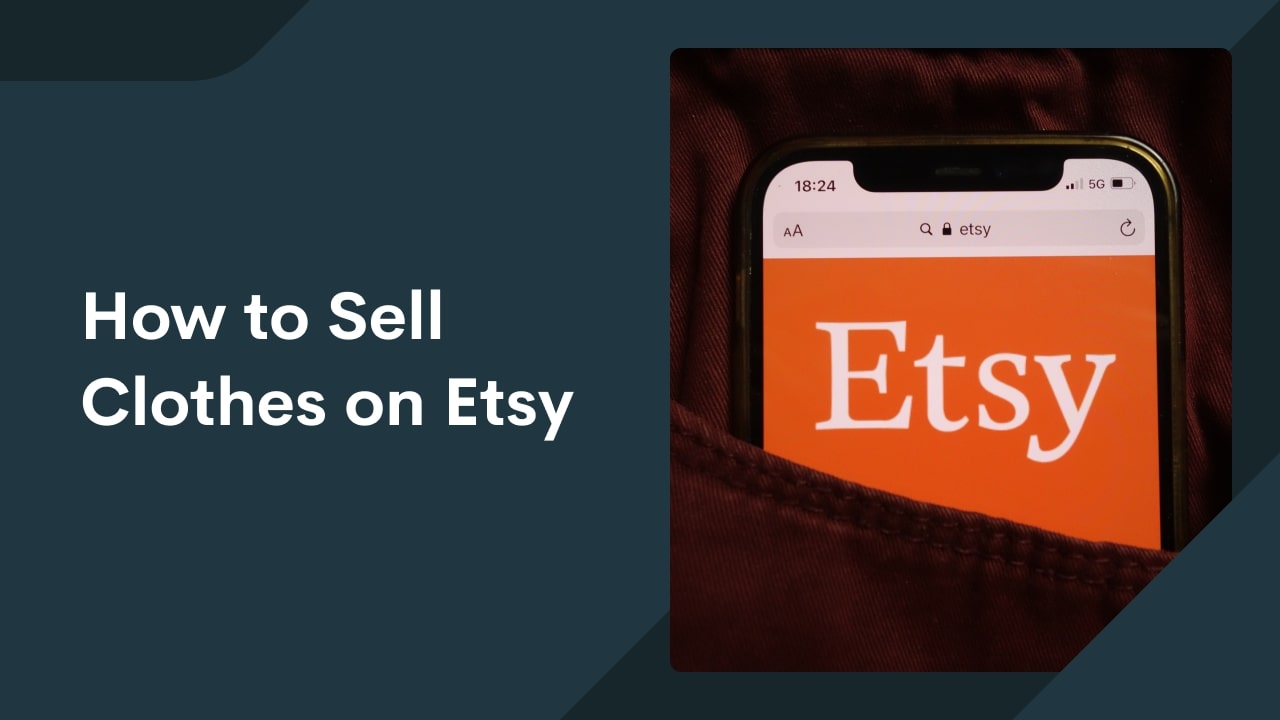
Printify + your favorite platform = more sales!
Ready to tap into a goldmine? Selling clothes on Etsy is where it’s at. With a staggering 96.2 million buyers in 2023, and nearly half of them returning for more, the platform is ripe for sellers.
Selling clothes on Etsy isn’t just a hobby – it’s a real money-making opportunity waiting for you. Discover how to turn your fashion flair into a thriving online business on one of the world’s best sites for selling clothes.
This post may contain affiliate links, which means we may earn a commission if you make a purchase through those links. This comes at no additional cost to you.

Whether you’re a bright new fashion designer, a vintage expert, or someone with a keen eye for style, let’s explore the types of clothes you can sell in an Etsy shop.
This category is all about customized and personalized clothing, and is your chance to offer unique and tailored products specifically to customers’ preferences.
Although these terms are used interchangeably, custom clothing is like jazzing up a basic tee, adding your creative flair to simple items from big manufacturers. This way, you’re not making the clothes but giving them a unique touch.
Personalization is when your customers get in on the fun. They add their own names, photos, special dates, or graphics to make products their own.
Customization is your creativity – personalization is theirs.
It’s a major draw for shoppers on Etsy, and that’s why the print-on-demand business model is so popular there. It’s where you take shirts or other clothes from third-party suppliers and decorate them with your designs and sell them online for profit.
Etsy has rules for vintage items. For example, vintage clothes must be at least 20 years old. For this, Etsy may request details, like the item’s source, how you determined their age, the designer, and specific characteristics like fabric and labels.
To build trust with potential buyers, you should have thorough documentation and authentic information for your vintage pieces.
This category is straightforward, brand-new manufactured apparel. Whether it’s your own designs or sourced items, these are never-worn clothes that appeal to customers looking for the latest in fashion.
Here, you’re offering pre-owned clothes. It’s an excellent way to provide value to customers looking for more affordable options or who are interested in sustainable fashion by reusing and recycling garments.
Etsy emphasizes the handmade section. If you’re a maker, note that you must physically create the product. If you’re a designer, you might design the items and have them produced by a production partner.
In both cases, Etsy requires transparency about the production process. You must state who’s involved in making your items and how they’re produced. This openness is crucial for maintaining the integrity and trust that Etsy’s community values.
No matter which category you wish to represent, you must understand and adhere to Etsy’s policies. Your success on Etsy depends on meeting these guidelines while offering high-quality clothing.

When filling your Etsy shop with fabulous finds, you need to know the no-go’s.
First up, no reselling of mass-produced clothes in the handmade category. If you didn’t design or make it, don’t list it as handmade. Etsy is all about genuine creation.
Also, watch out for intellectual property rights. Avoid clothes with trademarked logos or designs you don’t have permission to use. Originally is everything on Etsy.
Etsy keeps an eye out for policy breaches, and non-compliant listings can be removed or risk account suspension while still owing outstanding fees. Stick to Etsy’s guidelines, and you’re golden.
Selling clothes on Etsy is an exciting adventure, and getting your ducks in a row from the get-go is key to success. Let’s break down the essentials of how to start a clothing line on Etsy.
Start your Etsy print on demand business today!

Picking your niche is like finding the perfect outfit for an occasion.
What is a niche? A specialized market segment for a particular kind of product. It’s important as it helps you stand out in a crowded marketplace and attracts the right Etsy customers.
To find your niche, consider what you’re passionate about and identify gaps in the market. Are you into eco-friendly products, vintage clothing, or quirky graphic tees?
Use tools like Google Trends, Semrush, or the Ubersuggest Chrome extension to research and understand your target audience’s preferences.
Niches like eco-friendly children’s wear, plus-size vintage items, or handmade military mom t-shirts are just a few examples that can differentiate your shop.
Think of your brand as the personality of your shop. It’s not just about a catchy Etsy shop name, it’s the essence of your business. Good, consistent branding creates a memorable impression and builds trust.
Branding encompasses everything from your logo and shop aesthetics to high-quality photos and the tone of your product descriptions. It reflects who you are and what you promise to your customers when you sell on Etsy.
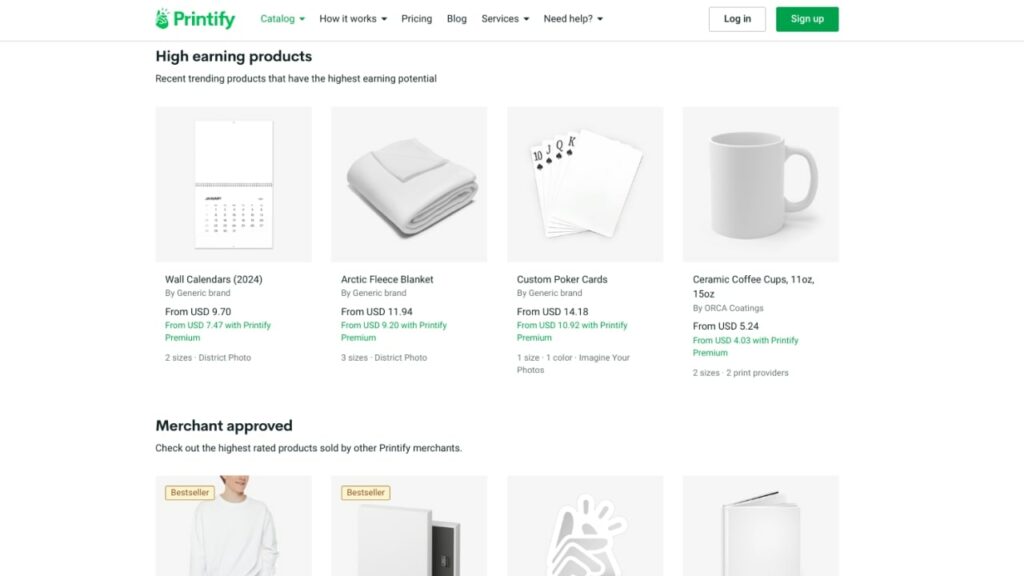
This is where your creative flair comes into play. Conduct product research, look into current trends, check out other sellers, see what’s in demand, and consider what aligns with your brand and skills.
Will you focus on t-shirts, bespoke dresses, casual street style, or niche athletic wear? Keep an eye on fashion blogs, social media, and even Etsy itself to understand what’s hot and what’s not.

The big question while working out how to sell clothes on Etsy, is how will you bring your products to life and get them into the hands of customers?
Explore these methods, each with its own cost, time investment, and scalability.
Ideal for those Etsy sellers just starting out, POD is there to design and sell shirts and other custom clothing with no inventory worries. It’s cost-effective, with no upfront expenses for stock, packaging and shipping supplies, or any tangible burdens of in-store selling.
With the POD model, your clothes are printed and shipped only when a customer purchases from you, making this the perfect model to generate passive income.
Dropshipping is like being the middleman without the hassle of a warehouse. You sell products that are shipped straight from the supplier to your customer’s doorstep. The difference between this and POD is that you don’t design the items.
Instead, you’re picking from a catalog of pre-made products. It’s a great option if you want to offer a variety of items without handling stock. It’s also perfect for reaching customers worldwide without worrying about customization.
If you’re confident in your product’s demand, buying in bulk from wholesalers might be a viable option. This approach often leads to better per-unit pricing and savings on shipping costs, potentially increasing your profit margins.
Partnering with local manufacturers can offer more control over the production process and support local businesses. It’ll take more investment, but it can pay off in quality and brand reputation.
For the ultimate control over quality and design, consider producing items yourself or with a team. This model requires more resources and skill but allows for complete customization and hands-on quality control.
It’s time to set up your Etsy account and online store. Think of this as laying the foundation for your business. It’s about getting the technical bits right so that you can focus on the fun part – creating and selling your fabulous clothes!

Before anything else, you need to create an Etsy account. It’s your all-access pass to both selling and buying on this diverse platform. Simply sign up, add a profile picture, and a bio to introduce yourself to the Etsy community.
The initial setup requires a desktop browser. Once your shop is open, you can manage everything on the go with the Etsy app.
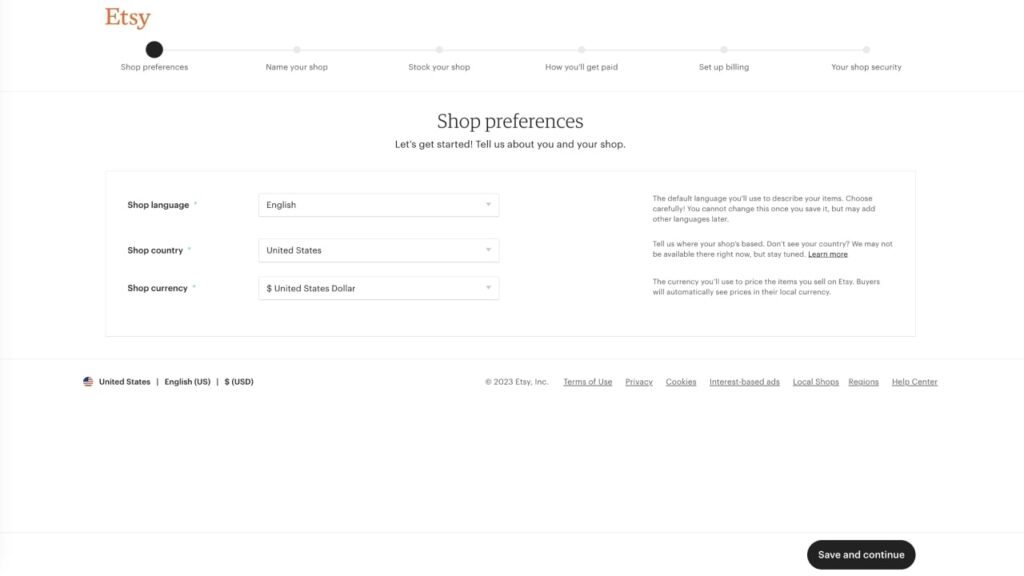
Let’s cover the process of setting up an Etsy store:
Stuck deciding on a name? Try this AI Business Name Generator.
Connect your bank account to your Etsy shop to make the cha-ching happen. This setup varies based on location, so follow Etsy’s guidelines specific to your country.
Regarding Etsy payments – add a debit or credit card to pay Etsy’s charges. For more on listing fees, check out our article, Etsy Fees Explained.
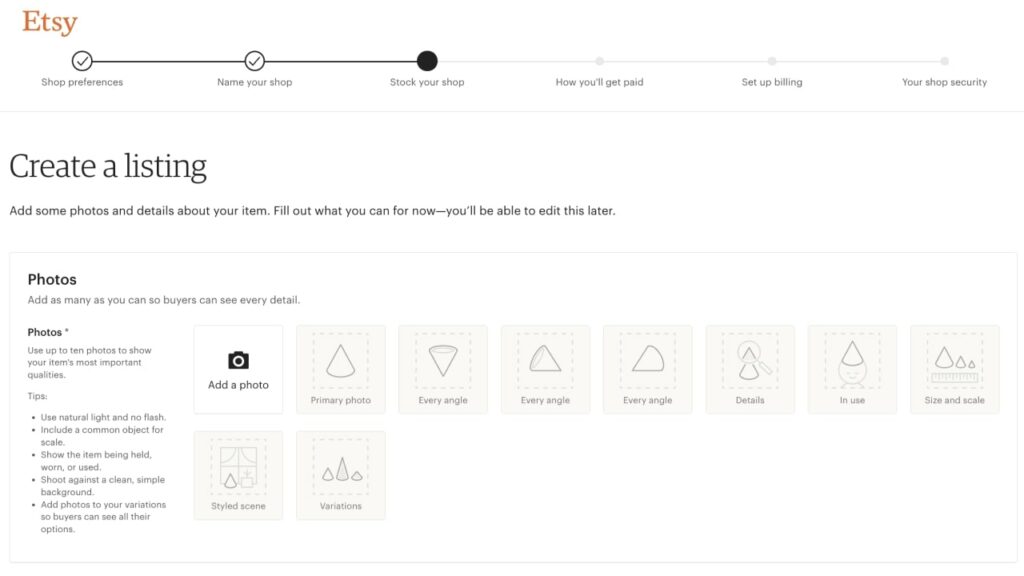
You can start selling on Etsy when you add your first listing. Think of this as the grand opening of your online boutique. You don’t need to list all your products right away, but this initial step is what flips the Open sign on your Etsy store.
Now that your Etsy store is up and running, it’s time to dive into selling on Etsy by listing and optimizing your clothing items. A well-crafted product listing showcases items and makes them discoverable enough to start making money online.
Mastering Etsy search engine optimization (SEO) is essential for getting your products noticed in a crowded marketplace.
Check out this guide on Etsy SEO for some pro tips.
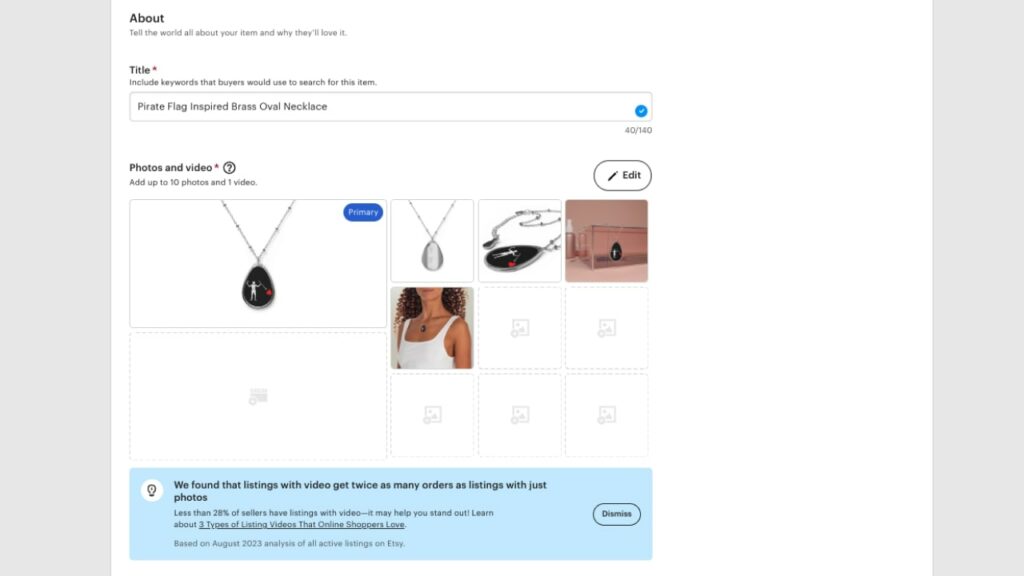
Think of your product title as your item’s handshake – it needs to make a solid first impression. The trick is to be clear and descriptive while featuring keywords related to your goodies.
Explore keyword research tools, or take pointers from Etsy’s search bar suggestions. It’s an excellent way to discover what your audience types when seeking the perfect t-shirt or vintage item. So, instead of throwing words in the dark, you’re strategically placing signposts leading straight to your products.
This is where Etsy sellers tell the story of their products. Be detailed and descriptive, highlighting the unique features of your clothes. Mention relevant details, like the material, size, and care instructions. Good descriptions not only inform customers but also help with SEO.
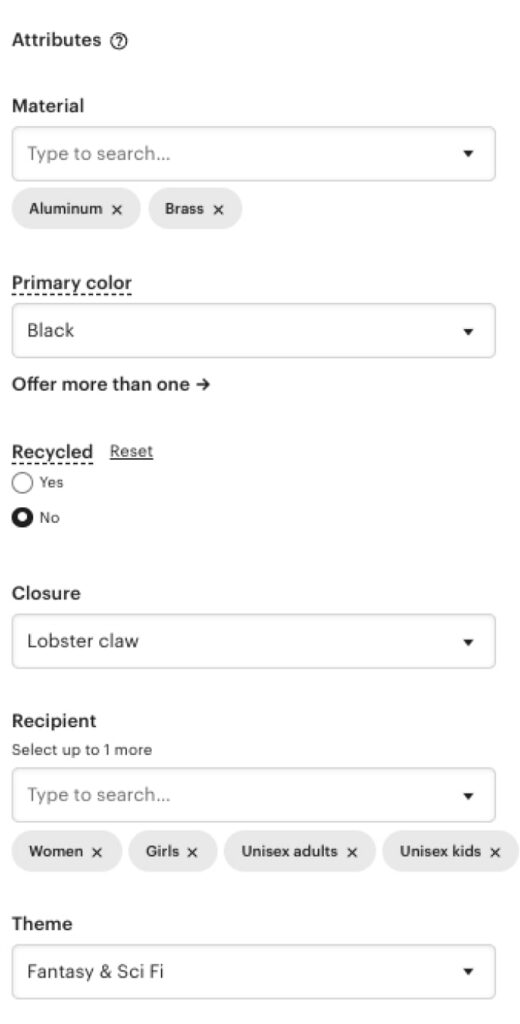
Keywords are the secret sauce of Etsy SEO. Use relevant and specific keywords in your titles, descriptions, and tags. This improves your visibility in search results. Attributes, like color and size, also affect how Etsy’s search algorithm ranks your products.
When selling clothes on Etsy, offering choices like different sizes or colors can draw in customers. But not everything needs to be listed since too many options could overwhelm shoppers. Find that sweet spot – offer enough variety to be appealing, but keep it simple enough to avoid decision fatigue.
For a deeper dive into getting this balance just right, have a look at this handy article on product variants. It’s all about making choices a delight, not a dilemma.
On Etsy, photos can be the make-or-break factor in a shopper’s decision. You can take a couple of routes for high-quality snaps that do your products justice, especially with the POD model.
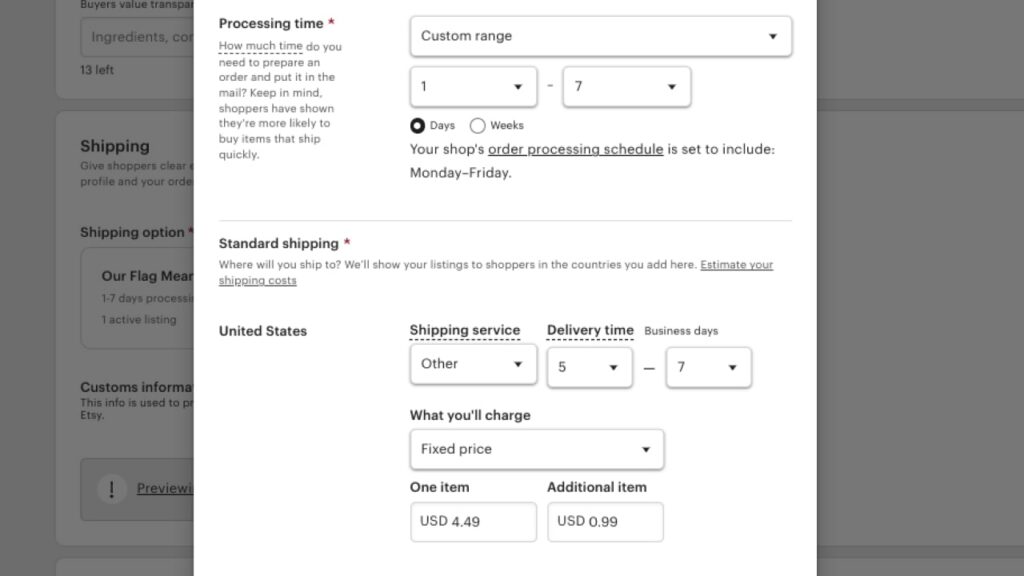
Be transparent and precise about your shipping policies. Include information about the shipping rate, methods, times, and special packaging details. This helps set clear expectations with your customers and can be a deciding factor in their purchase decision.
If you choose the POD business model, you don’t need to worry about Etsy shipping labels – it’s all taken care of for you.
Outline your shop policies regarding returns, exchanges, and contact information. Clear policies build trust and confidence among your customers, making them more likely to shop with you.
A great product needs an audience, and implementing effective marketing strategies should be at the top of your business plan. Let’s look at various methods that can help you sell online successfully.
Etsy offers powerful tools to boost your visibility both onsite and offsite. Etsy ads help your products shine via promoted listings – ideal for capturing the attention of shoppers already browsing the platform.
Etsy onsite ads strategically place your products in prominent positions, like at the top of search results or within relevant category pages.
Off-site ads extend your reach beyond Etsy, showcasing your items on platforms like Google and Facebook. It’s like casting a wider net to catch more fish – reaching potential customers wherever possible. The best part is that you don’t manage these ads yourself – the Etsy team does.

Social media is your runway to the world. Platforms like Instagram, Pinterest, and TikTok are perfect for showcasing your product listings in all their glory. Create engaging content, share behind-the-scenes glimpses, and connect with your audience.
Use tailored hashtags, post regularly, and interact with your followers to build a community around your brand. It’s not just about selling – it’s about creating a narrative people want to be a part of.
Think of Etsy email marketing as your direct line to your customers. It’s personal, effective, and a great way to keep your audience engaged. Share updates about new collections, special offers, and interesting content related to your Etsy clothes.
Remember to provide value. Whether it’s exclusive discounts for subscribers or insightful fashion tips – make your emails something your customers look forward to.

Influencer marketing is like having a friend who tells everyone how great you are. Collaborating with influencers who align with your brand values and aesthetics can introduce your Etsy clothes to a broad, yet targeted audience.
Find influencers using platforms like Upfluence and Klear. Whether it’s a fashion blogger, a sustainability advocate, or a vintage lover, employ influencers and micro-influencers who resonate with your brand.
Start selling clothes on Etsy with Printify. It’s your ticket to a booming clothes business without inventory woes. POD is a game-changer, allowing you to start a business in a few simple steps.
Create your free account. It’s a straightforward process that unlocks access to our extensive Catalog of high-quality products and the tools to customize them.
Once your Printify account is set up, integrate it with your Etsy store. This allows seamless synchronization of your product listings, orders, and shipping details.
Now, let those creative juices flow. Our beginner-friendly Product Creator is where your ideas come to life – upload ready designs or create new ones from scratch in minutes. Our AI Image Generator, Text Editor, and Graphics Library are at your fingertips.
Publish your listings on Etsy, complete with compelling product descriptions, eye-catching photos or mockups, and competitive pricing.
Once you make a sale, Printify takes care of the production and shipping directly to your customers. It’s a hassle-free way how to sell on Etsy, leaving you more time to focus on growing your brand and reaching new potential customers.
There you have it – your roadmap on how to sell clothes on Etsy, from finding your niche and target audience to mastering Etsy SEO. Embrace the power of Printify for hassle-free selling and succeed on Etsy by listing quality clothing on your own online store.
With millions of potential customers just a few clicks away, the opportunity to turn your fashion flair into a thriving business has never been better. Don’t wait to sell clothes on Etsy – roll up your sleeves, unleash your creativity, and start your Etsy journey today.
Open your business today: Create and sell beautiful custom-products within minutes. Printify prints, and delivers 1,300+ products at the lowest prices around. No risk, all reward.
100% free · Easy to use · 1,300+ products